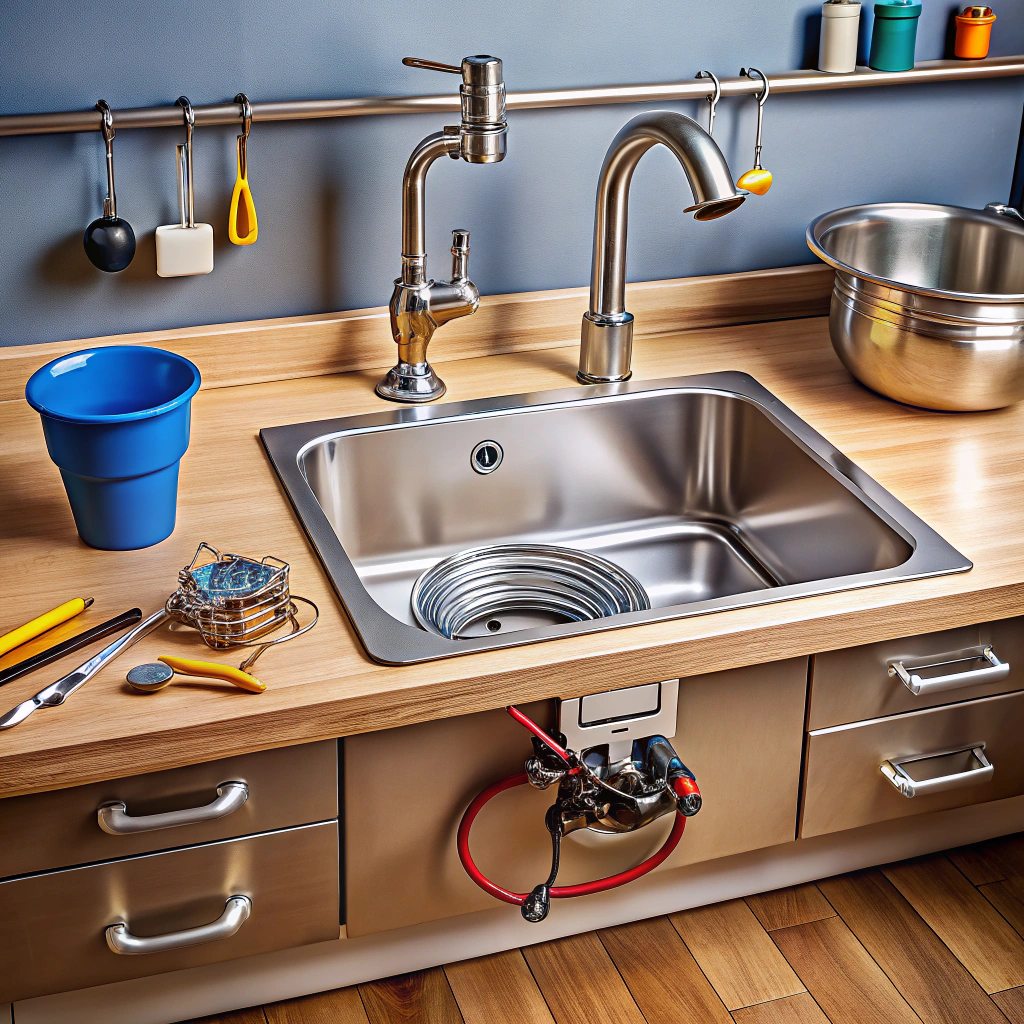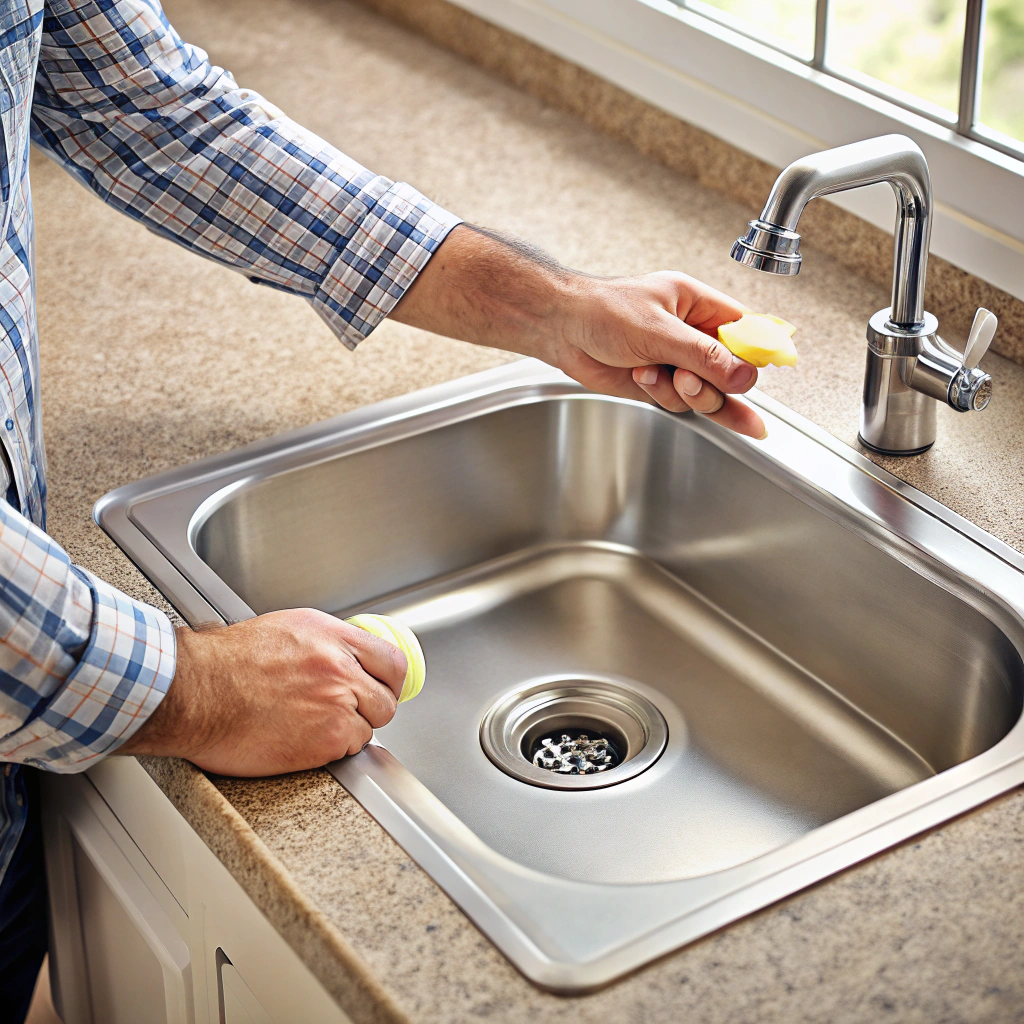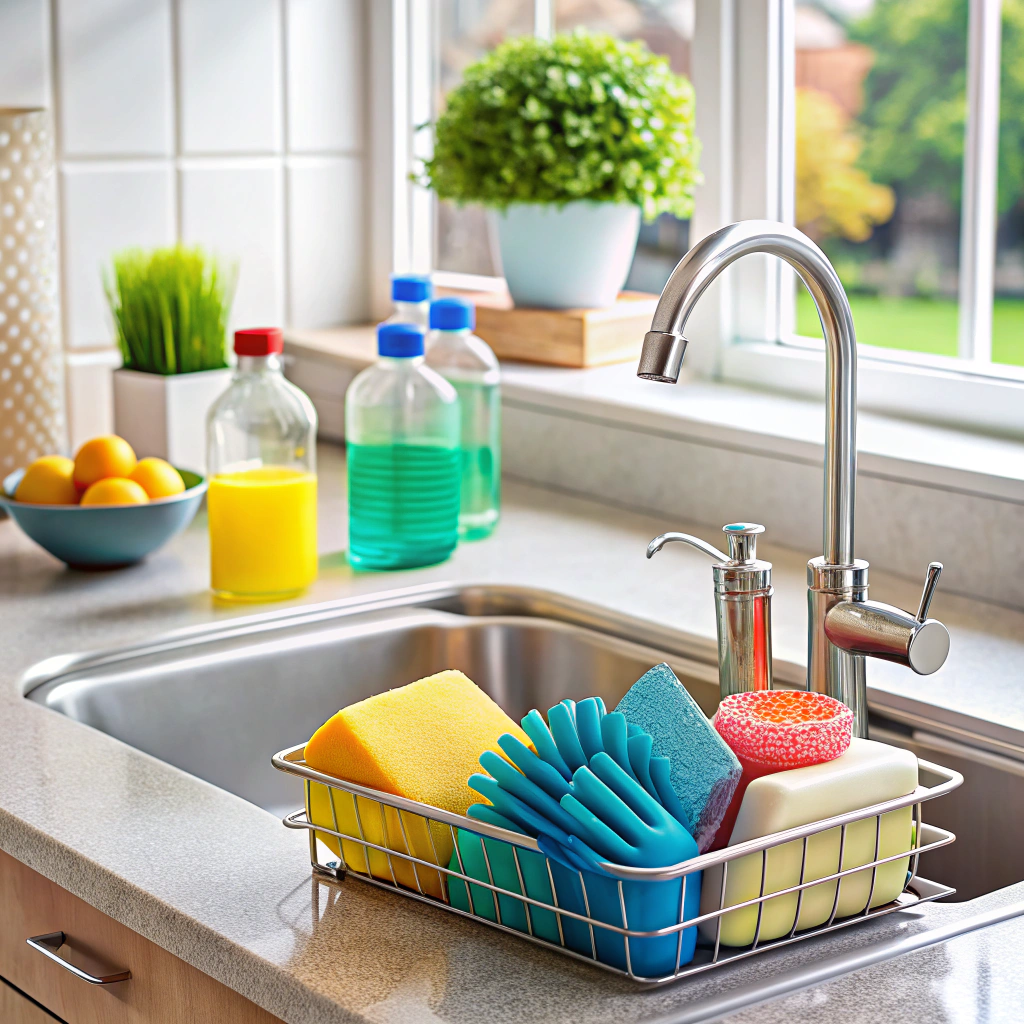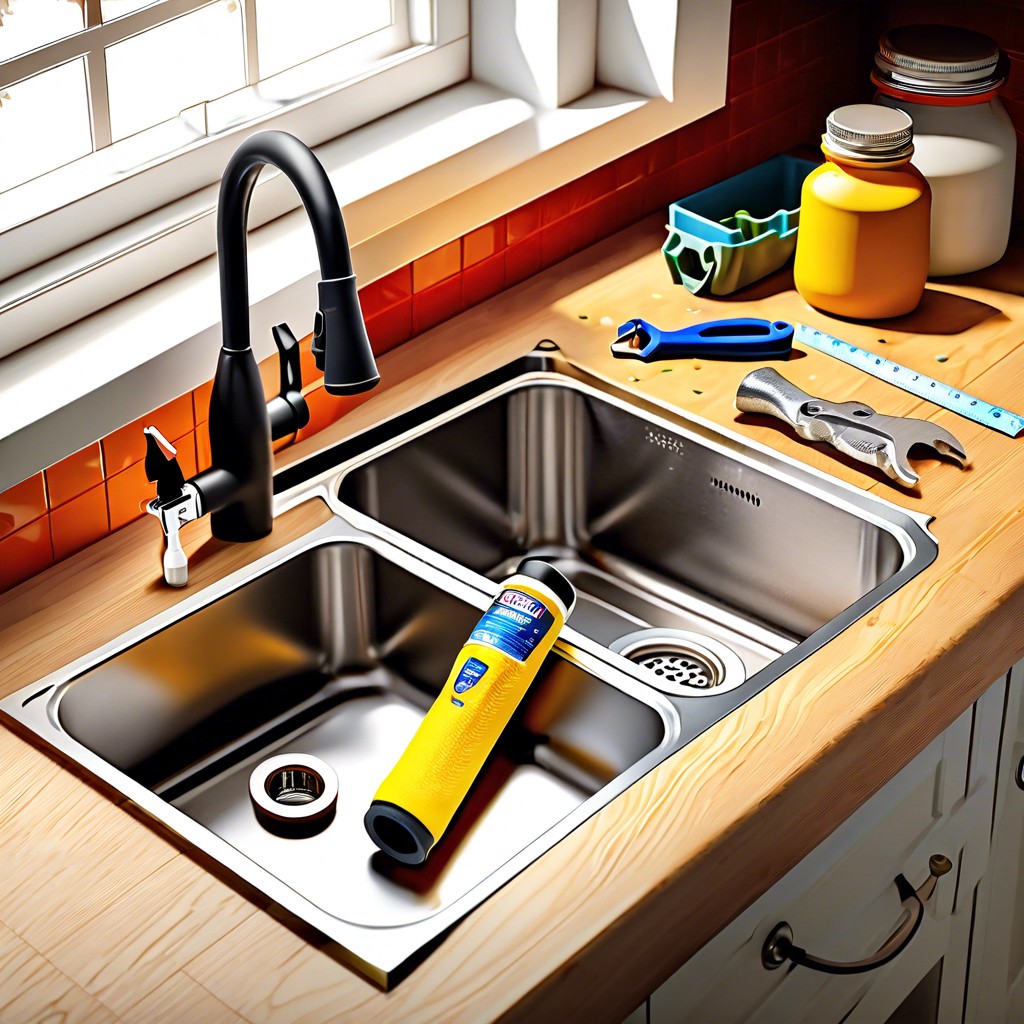Last updated on
Discover practical solutions to eliminate sewer-like odors from your bathroom sink.
Key takeaways:
- Regularly clean your bathroom sink to eliminate bacteria build-up.
- Keep the P-trap under your sink wet to prevent odors.
- Use baking soda, vinegar, and hot water to remove nasty smells.
- Clean the overflow hole and remove any trapped debris.
- Boil water, use baking soda and vinegar to remove biofilm buildup.
What's Inside
What Causes the Smell Coming From Your Bathroom Sink?
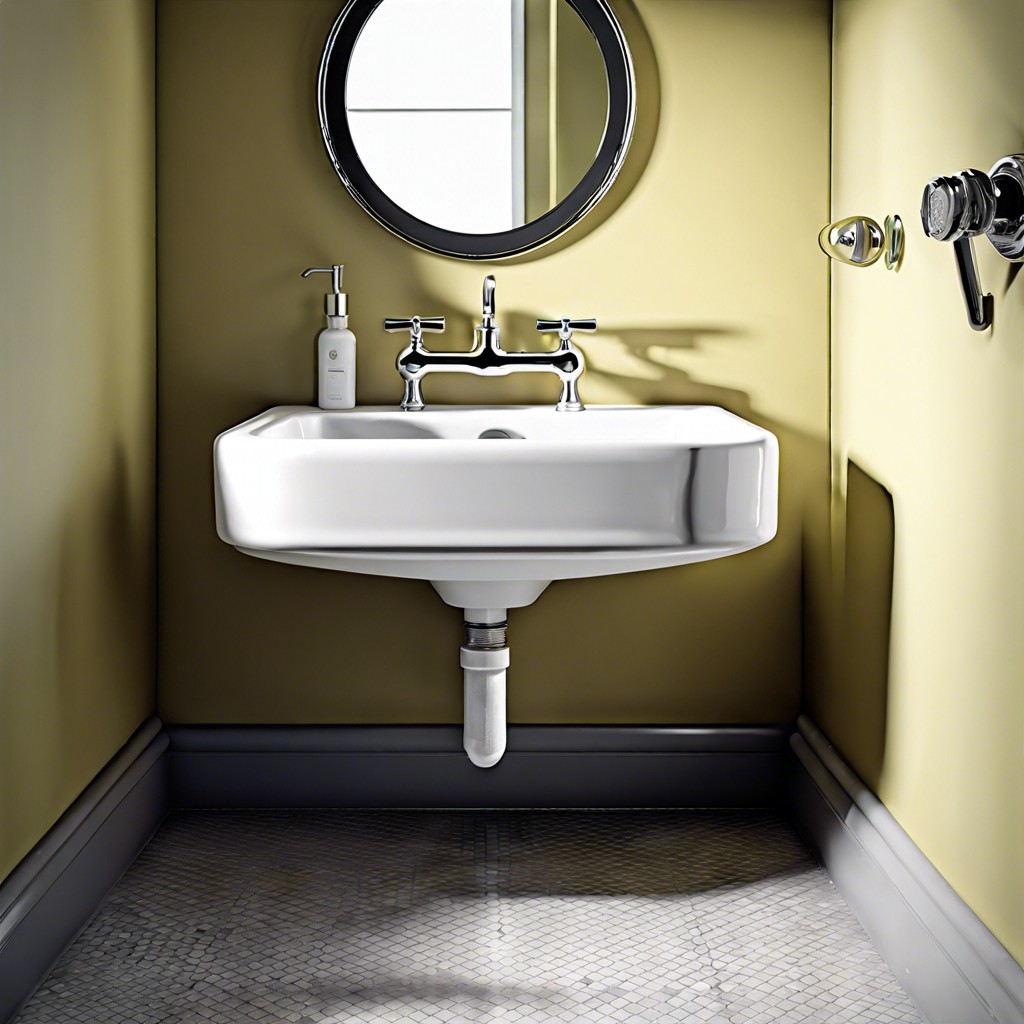
Have you ever caught a whiff of something foul while brushing your teeth and wondered why your porcelain haven smells less like fresh mint and more like a dank, damp basement? It’s not your imagination; there are actual culprits for that unwelcome sewer aroma. Let’s dive into the nitty-gritty without holding our noses any longer.
Predominantly, a thriving community of bacteria finds the conditions in your sink quite appealing, especially if it’s often damp and rarely cleaned. The little critters feast on debris, soap, hair, and other organic matter, turning your drain into a stinky bacteria banquet.
Another usual suspect is a dry P-trap. This U-shaped pipe is a vital player in preventing sewer gases from taking the express elevator up your drain. When it runs dry, for myriad reasons, it effectively rolls out the red carpet for odors usually trapped below.
Now, don’t worry, your bathroom’s not plotting against you. These issues are fixable with a little elbow grease and attention to detail. Just grab your detective hat, because we’re about to sniff out and eliminate those stinky sink scoundrels.
Bacteria Build-Up
Bacteria thrives in moist environments, and your sink drain provides the perfect habitat for them to multiply. When hair, soap scum, and other debris get stuck in the drain, these unwelcome guests have a feast, breaking down the waste and giving off an unpleasant sewage stench.
Think of the drain as a bacteria’s buffet—every strand of hair and drop of toothpaste is a delicacy. As the bacteria digest these organic materials, they release foul-smelling gases, which escape through the sink, turning your bathroom into a less than refreshing space.
To keep the bacterial party down below from sending their smelly reminders, regular cleaning is your best defense. Flushing the drain with hot water, vinegar, or baking soda can help dislodge the gunk that bacteria cling to, cutting off their supply and keeping your sink smelling fresh. Remember, a happy sink is one that doesn’t smell like the city sewer. Keep it clean, and you’ll breathe easy.
Dry P-Trap
Picture the P-trap as the guardian of your sink, that U-shaped pipe beneath it meant to hold a small amount of water at all times. This water forms a seal that blocks the sewer gases from wafting back into your bathroom. Now imagine it going bone dry. That’s like rolling out the red carpet for foul odors to make their grand entrance.
Why does it dry out, you ask? It could be as simple as infrequent use of the sink. If you’ve been vacationing or perhaps have a guest bathroom that doesn’t see much action, water evaporates, and the barrier goes with it.
In arid climates or heated indoor air during winter, evaporation speeds up. Normal usage should keep things watertight, but if your nose tells you otherwise, you’ve got an easy fix. Just run the water briefly to reinstate your microscopic bouncer—the water seal—back to its post. This ‘splash and dash’ will immediately combat the odor by reestablishing the water trap, a minute-long effort that hits the nose-saving jackpot.
How to Remove the Nasty Smell in Your Bathroom Sink
So, you’ve pinpointed where that off-putting odor is wafting from—it’s time to roll up your sleeves and dive into the nitty-gritty of banishing it for good.
First, show that sink who’s boss by giving it a good old-fashioned scrub. A mix of baking soda and vinegar, followed by scalding hot water, works wonders. The dynamic duo fizzles out the gunk, and the heat sends it packing down the drain.
Next, make sure your P-trap—the U-shaped pipe under your sink—stays wet. A parched P-trap is like an open invitation for stench to slide up your pipes. Plus, a splash of water is all it takes to create a barrier against the invasion of sewer smells.
Remember the overflow hole? It’s often overlooked, but boy, can it stink! With a bottle brush and some soapy water, oust any muck lurking there to keep things fresh.
Lastly, peering down the drain with a flashlight can save you a headache. If you spot any trapped hair or debris, fishing it out with a trusty pair of tweezers will prevent a mini stink-fest from forming in your pipes.
There you have it, a battle plan to tackle that sewer smell! Keep these tips handy, and you’ll maintain a fresh-smelling bathroom sink with ease.
Clean Your Sink to Remove Biofilm Buildup
A smelly sink is often a sign that a slimy substance has made itself at home in your drain. This biofilm is a mix of soap scum, food particles, and bacteria—think of it as a housewarming party for germs.
Roll up those sleeves; it’s time to evict these uninvited guests. Begin by boiling a kettle of water. This is your first line of defense. Pour it slowly down the drain to help loosen the gunk.
Next up, whip up a dynamic duo of baking soda and vinegar. Sprinkle half a cup of baking soda into the drain, followed by half a cup of white vinegar. This combo fizzes upon contact, breaking down the grime. Cover the drain with a plug and wait for the magic to happen—about 15 minutes should do the trick.
After the clock runs out, flush the drain with another round of boiling water. This not only washes away the loosened biofilm but also tests if the smell has waved the white flag.
Remember, regular maintenance keeps the biofilm blues at bay. A monthly repeat of this cleaning ritual can keep your sink smelling fresh. Plus, it’s a satisfying, chemical-free fix to a common household nuisance.


